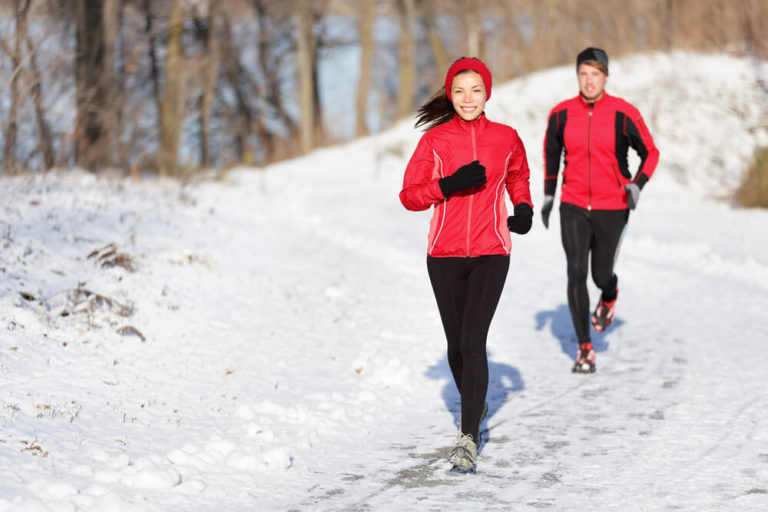Our website contains links to partner sites. If you click from our site to the partner's site and purchase their services there, we will receive a commission for mediation (Find out more information). This form of cooperation does not affect the objectivity of our reviews. With each purchase made through links from our site, you support our editorial office so that we can create quality and useful content in the future. Thank you.
How to stretch before a run
It’s critical to give muscle groups time to prepare before instantly increasing their task, such as going for a run. However, with our correct posture, many of our muscles tighten or shorten. However, while running, these muscles are strained. There is a risk of harm if the transition from resting to running is made too quickly—a pre-stretched muscle can manage and endure stress more effectively than an unstretched one.
Why is it important to stretch before a run?
Stretching before running or any activity is critical for both preventing injuries and improving the quality of the training session. Moreover, the term “stretching” encompasses a wide range of exercises. Preferably, your pre-run warm up should provide some vibrant activity that mimics the movements of your workout. This allows for controlled stretching of the muscles. These can be accomplished either before or after a 5 to 10-minute mild jog.
Maintaining balance in mobility and power is essential for avoiding excessive usage and severe injuries. To enable an even and coherent range of motion, including a running gait or weight-lifting movement, both ends of the body must move in the same way.

Should you stretch before every run?
As per a 2014 study, stretching (holding a mono non-moving posture for 10 to 20 seconds) can definitely be detrimental to size and strength. This is especially important for elite athletes, but other research has found that stretching before a run can decrease running economy in endurance runners, and there is no solid evidence that it can decrease muscle fatigue.
Research behind stretching
Unfortunately, research has begun to prove that not only is it an unnecessary practice for assisting you via your run, but it may also be harmful. Several runners do not consider running before stretching their legs and arms, however, many athletic trainers believe it barely matters to a runner’s effectiveness.

When stretching could be advantageous
Easing up the hip bones may help stop damage and keep you on the path when runners possess poor mobility such as critical injuries or prolonged ones like lower-back issues. However, if you don’t feel rigid or have the will to loosen up, straining for the sake of stretching is probably not wise or even worth the trouble.
What is dynamic stretching
Dynamic stretches are effective exercises that allow joints as well as muscles to move through their complete range of movement. They could be utilized to help the body warm up before exercise.
Or
Dynamic stretches can be usable and imitate the motion of the upcoming activity or sport. A swimmer, for example, may curve their arms before entering the water.
Or
Dynamic stretches can also be described as a system of movements designed to get the body moving before engaging in any form of exercise. Trunk twists, walking leg lifts, and leg whacks against a wall are a few examples.
Why dynamic stretching
Dynamic stretching could be used prior to beginning any workout regimen. It may assist in warming up your body or getting your muscles working and ready for work. Dynamic stretches may be beneficial in the following situations:
Prior to sports or athletics. Dynamic stretches, according to studies by Trusted Source, may be important for athletes who will be running or hopping, such as basketball players, footballers, and runners.
Before engaging in cardiovascular exercise. Dynamic exercises can get your muscles warmed up and able for running, basic training, or swimming, which can enhance effectiveness and decrease injury risk.
Whereas dynamic stretching is beneficial for warming up, it is not required to do so as a rest period. Stretching dynamically raises your internal temperature. The goal of a cooldown is to reduce your body temperature.
Why is it important to stretch both sides of the body?
Stretching not only feels good, but it also plays a vital role in keeping our bodies healthy. Frequent stretching may provide the following benefits:
Increased adaptability. Stretching can help our muscle fibers extend and enhance our strength and flexibility.
Improved circulation. Stretching on a daily basis may have both short-term and long-term perks. A Reliable Source for Circulatory Health.
Injury risk has been reduced. Enhancing our strength and flexibility may minimize the risk of muscle injury.
Back pain is reduced. By bolstering the core muscles, stretching can help relieve and protect back pain.
Athletic performance has improved. Improved joint action and adaptability may aid in athletic performance.
There is less stress. Stretching is enjoyable for many people. Stretching stimulates our parasympathetic system, which can aid in relaxation.
Improve your posture. Muscle tightness can cause our body to hunch. Merging a stretching and core strengthening program may help us enhance our alignment.
Should you stretch after your run, too?
“Stretching after running benefits the body in a variety of ways. Stretching after running, in particular, helps to reduce injury,” explained Dobler. “Our muscles are more malleable after the run has warmed them up. Stretching properly will boost our adaptability, allowing our joints to move through their full range of movement with the little endeavor.”
We’ve been over this: racing home from a workout to complete other tasks on our to-do lists. In fact, canceling a post-run stretch would do more damage than good to our bodies. “Static stretching is great for the end of your cool-down, according to the science. It’s a good opportunity to extend your muscles, soffit, and tendon fibers and rebuild some movement,” Wartenberger says.
After a run, stretch to keep the muscles pliable and protect them from narrowing.” It also improves circulation, which aids in the reduction and removal of lactic acid, which causes muscle tension and pain during exercise.
Although there is no scientific proof concerning preventing injuries through stretching,” the scientist says, “it will still have a beneficial impact.” “Stretching for stress relief and retrieval after exercise can be extremely beneficial, that’s why a ‘no’ to stretching is also incorrect. Stretching, for example, can improve the perception of specific muscle groups. The rising blood circulation can help restore and encourage targeted comfort.







